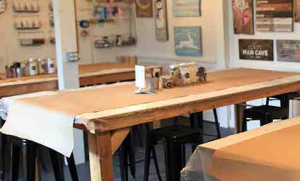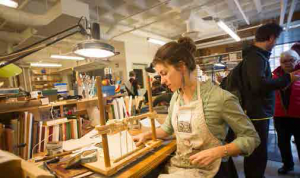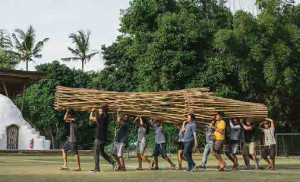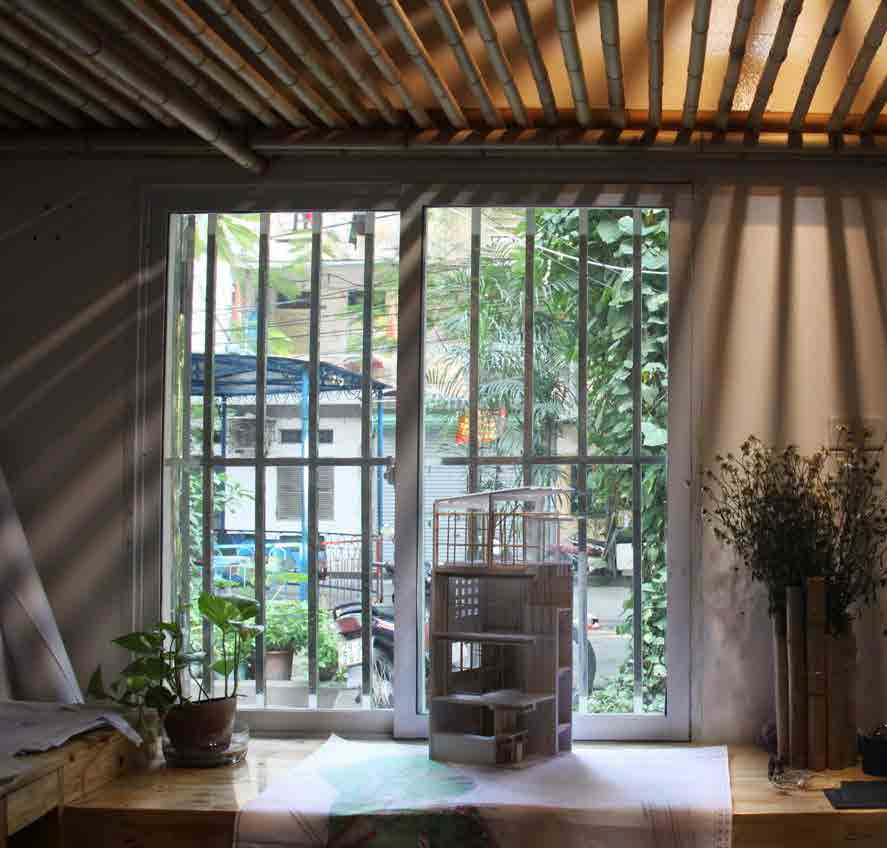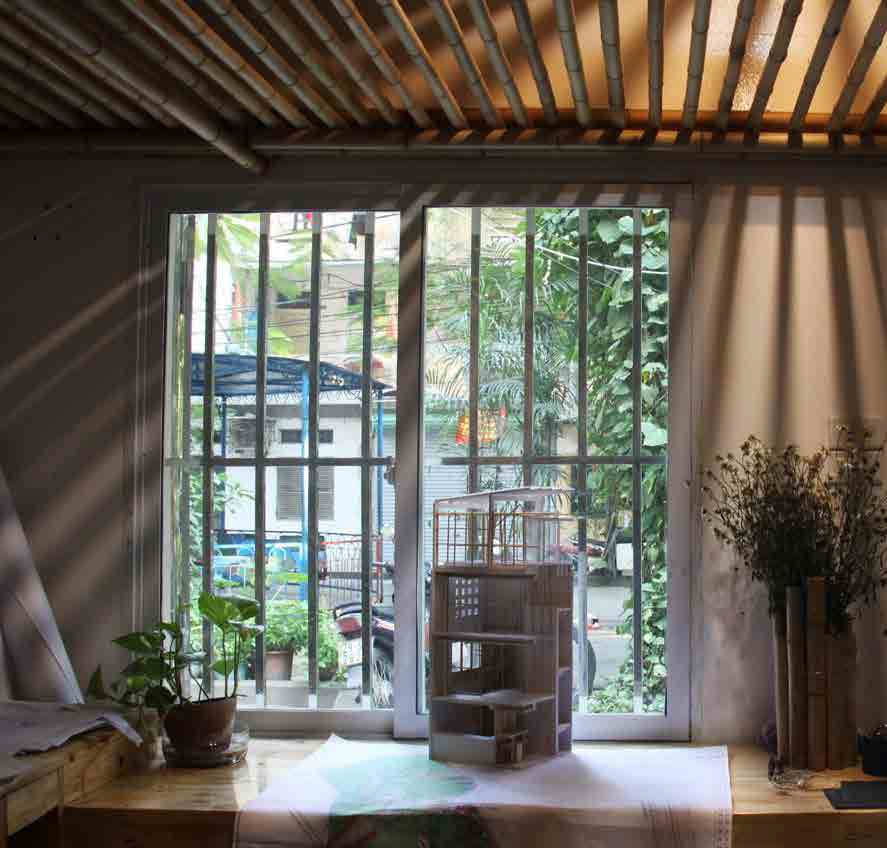Wood
Kecho lab
30th March 2020 8:45 GMT
Maintenance
Fastenings
Wood Treatment
Rough Carpentry
Wood Framing
Mechanically Graded Lumber
Structural Panels
Wood Decking
Sheathing
Subflooring
Underlayment
Wood Board Sheathing
Wood Panel Product Sheathing
Moisture-Resistant Seathing Board
Finish Carpentry
Exterior Finish Carpentry
Interior Finish Carpentry
Millwork
Prefinished Paneling
Board Paneling
Architectural Woodwork
Architectural Wood Casework
Cabinet and Drawer Hardware
Wood Paneling
Flush Wood Paneling
Wood Stairs and Railings
Wood Stairs
Wood Railings
Ornamental Woodwork
Wood Posts and Columns
Wood Trim
Reference
Book
Article
Course
Website
Guideline
Note
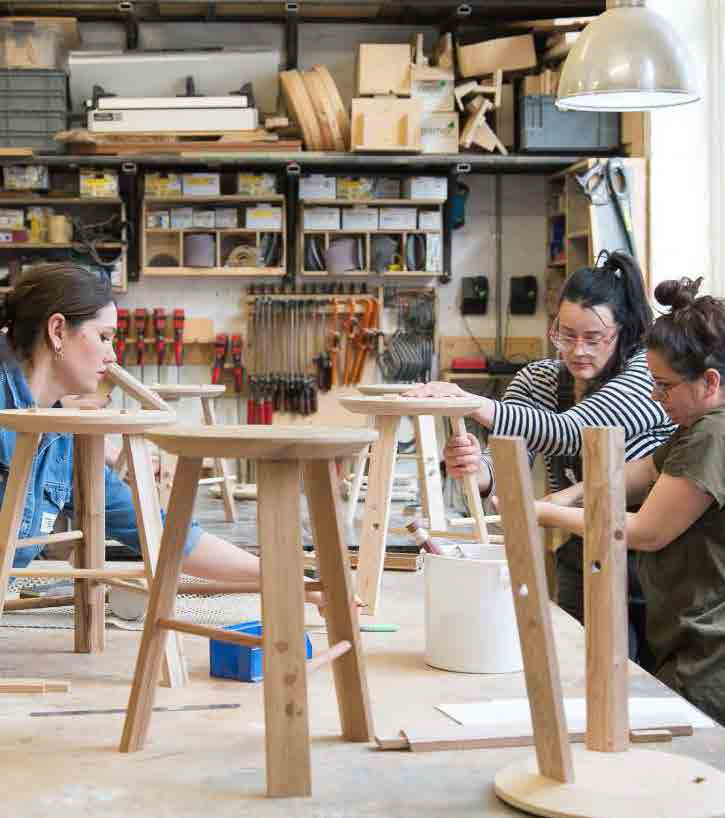
Imran Peretta © Lenka Rayn H

Kecho Lab
Kecho lab offers a wide range of workshops, inspired by the crafts of the villages around Hanoi. These crafts involve natural materials such as bamboo, wood, clay etc. By doin the workshop, we hope to increase awareness of these crafts (some crafts are already in the verge of disaapearing), thus help to sustainable thosee communities and at the same time provide new skills for the participants.
Beside the tranditional crafts, our own day presents ourselves new crafts, from the humanity field like creative writing to the technological driven “crafts” like digital modeling in architectural design. The emergence of these new crafts are necessary to deal with our increasingly complex problems of our time.
What is really interesting is that the old and the new have similarity, most of the time. beside some breakthroughs in technologies, in art and architecture, the past have been provern to greatly influence our moden design methodologies. We can cite some of the examples like space syntax, patterns, behaviours, or even “parametric” design.
The proposed bamboo joints for tensegrity structure are fall under many categories based on their load
- Example of a cmplex sound communication channel, diagram from Abraham Moles, Information Theory and Esthetic Perception, 1958
- Painting
Timeline

Maintenance
Imran Perretta: I studied it at school around the time the Twin Towers came down and it was also around that time that my body was growing at this exponential rate and I started to be seen as a public threat. I think reading the story about these young boys and how they were marked for their capacity for violence chimed with me because that was the way in which my body was also starting to be seen and it was a very uncomfortable realisation. The boys in the story were seeing this man’s house in a time of devastation just after the Blitz and I was interested in the parallel with the beginnings of the war on terror around the same time. So there were all these cultural and historical markers that meant that my narrative had this sort of eerie symbolic relationship with the narrative in the short story and this has always stuck with me.
Fastenings
I was interested in talking about a specific experience of structural oppression and Islamophobia in the hope that, if I spoke very lucidly about some of the things I’ve seen, then it would resonate in one way or another with people who had seen or heard something similar. I was reticent to talk about political forces like austerity and the war on terror in generic terms or just as pieces of legislation when what they do is affect families and individuals in a very intimate way. So what I was trying to do was to use very intimate and personal experiences of having been wronged as a way of aiming upwards at the state and authoritarian politics. I’m coming from a position of trying to critique power structures that have laid a path for me, and I can only do that in an embodied way, otherwise I’d be a commentator rather than someone who has actually experienced these things.
Wood Treatment
The building is a community centre that is slowly falling into disrepair because the local council budget was under austerity measures. I wanted to draw attention to its slow decay and the fact that if you erode social provision, what you are eroding are communities, families and real people and so the building becomes a protagonist in the work. You see liquid and gas entering the space as this sort of ingress, these insidious outside forces creeping in as well as drawing attention to the fact that the building is porous and falling apart.
Rough Carpentry
The core interest for me is how to reference images from conflict and war without actually having to show them—how you reference violence, especially state violence and material devastation, without having to show the people or the places that have suffered in reality. That is really important. We have become so accustomed to seeing black and brown deaths on television and to seeing certain bodies treated with a certain sort of callousness and coldness by the camera. So for me it is how can you show and allude to violence and conflict without actually having to show its real-life effects? How to talk about the things we’ve endured without having to further endure them, that is part of the mission, the political strategy of the work.
Wood Framing
My background is really in sound. I’m interested in how sound, regardless of context, can give a very embodied or visceral response in a viewer or listener. In that sense it’s a tool you can wield in very interesting ways cinematically. It relates to VFX in that I’m interested in the kind of soundtracks you find in war films and horror and thriller films and using them not to talk about espionage and grand action sequences or people running through the trenches, but for someone talking about their anxieties about the world or the situation they find themselves in. It’s this really affective, effective tool for personifying anxiety and depression but also love and joy and care. So for me sound becomes a way of creating both dissonance but also consonance in the work. In a lot of ways the writing comes first, the sound comes second and the image comes last in my thinking, it’s definitely a very important part of what I do.
Mechanically Graded Lumber
That’s very important. People of colour are rendered both visible and invisible at all times and against their will. There’s no better example of that than in the government’s Prevent Strategy and how it has forcibly made visible Muslim communities throughout the UK and at the same time has made them invisible in strategic ways. So you have this sense where you are made incredibly visible to the authorities but you can be detained and not seen by your family and friends for years at a time. Visibility becomes this key tool for agency that has been taken away by the state, so trying to crop people and trying to give them back their anonymity was a way of trying to give them back their agency. Surveillance seems to be a key theme in all your films, whether in your choice of camera angles, the way shots are framed or in the use of drones.
Structural Panels
And I happen to belong to one that has been surveilled the most in a post-9/11 context. So my sense of self is invariably conditioned by the way I am seen by the state: I am hyper-visible and have been since I was 14 years old, the first time I was stopped and searched by the police. So part of me going on this long and winding road to becoming an artist film-maker is about trying to find a visual language for my own visibility but one that tries to resist the dominant or normative forms of cinematic and state visibility. I’m trying to find something else that can reference my visibility but also critique it. That’s really my mission, so to speak.
Note
The informal way of working with wood has been found in many cultures around the world. The acacia wood in the jungles of the Sounthern tip coastal area of Vietnam, for example, is use in an ad hoc manner as pilotis to support housing slabs.

